A Dietitian’s Guide to 8 Common Diets: Pros, Cons & What to Know

The following article was written by Heinen’s Chief Dietitian, Melanie Jatsek RD, LD. Please consult your healthcare provider before making any changes to your diet.
Listen to this Article
Just when you thought you had it figured out, a new diet pops up making you doubt your current style of eating. Before you jump, skip, and hop on the next diet bandwagon, it’s important to understand the impact that diet can have on your health. Read on to learn about the eight most common diets of today so you can make informed decisions about the food you eat.
Before diving into any diet, you should ask yourself a few screening questions to ensure you aren’t wasting precious time, energy, and health. Afterall, how you’re eating may be working beautifully, so why fix what’s not broken?
To clarify, the word “diet” in this article refers to a style of eating, not a weight loss diet.
3 Questions to Ask Yourself When Evaluating a Diet
1. Is my current diet working for me?
One simple way to answer this question is to look at your recent bloodwork. Hemoglobin A1C, fasting insulin, fasting glucose, HDL cholesterol, LDL cholesterol, triglycerides, and C-reactive protein (CRP) can tell you a lot about what’s going on inside. These numbers don’t lie!
It also helps to check in with how you feel physically. Are you full of energy or tired all the time? Do you have regular bowel movements (i.e. 1-3 per day)? Do you sleep soundly or are you restless and have trouble falling or staying asleep? Do you feel satisfied after a meal or are you perpetually “hangry”?
Your emotional health is another important factor to evaluate. Does the way you eat make you feel restricted or free and peaceful?
2. Does the diet in question make sense?
In other words, does it look great on paper, but raise a red flag when you take a closer look—like it’s too good to be true? For example, a red flag should go up if a diet has you either eliminating unarguably nutritious foods like fruits and vegetables or eating gobs of foods that should be eaten in moderation, like meat and butter.
3. Is this a diet I can easily follow for the rest of my life if I had to?
This is such an important question because nothing is more frustrating than giving something your all, only to burn out after a couple of weeks because you feel too restricted. Feeling deprived is the quickest way to abandon a diet and binge on the very foods you were forbidden to eat.
8 Common Diets Explained
My intention is not to debunk or defend any diet, but rather to lay it all out so that you can decide whether it passes the screening questions above. As you read each plan, watch for any “too good to be true” promises—they’re often a red flag when evaluating an eating style.
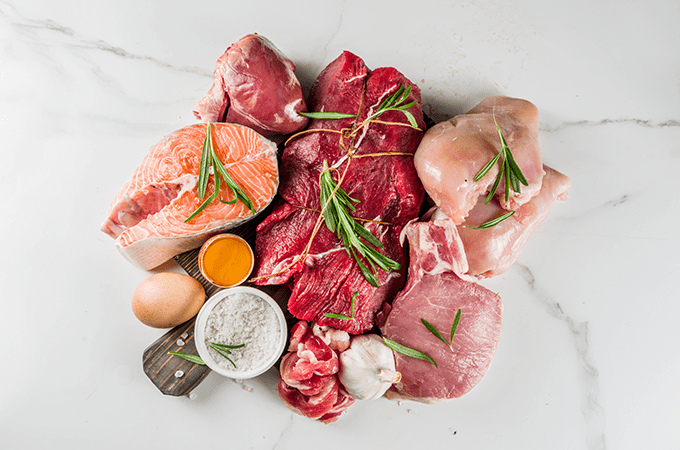
1. Carnivore Diet
The carnivore diet is just as it sounds: a diet based solely on meat. Also included are fish, eggs, and certain dairy products. It’s a no-plant meal plan, which means all fruits, veggies, legumes (beans, lentils, peas, etc.), greens, nuts, seeds and grains are excluded.
Common side effects of the carnivore diet are headaches, fatigue, digestive issues and nutrient deficiencies.
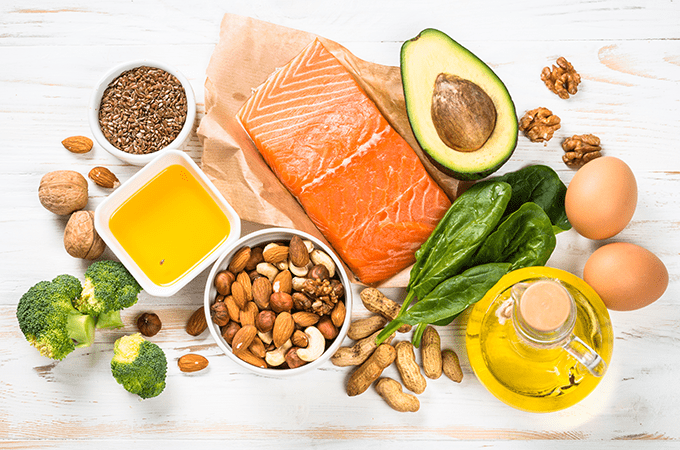
2. Keto Diet
The goal behind the keto diet (short for ketogenic diet) is to force your body to burn fat as fuel, a state known as ketosis.
This plan limits carbohydrates to 5-10% of your calories, while promoting the bulk of calories from fat (60-75% of calories) and animal protein (15-30% of calories). On a 2000 calorie diet, this means eating no more than a small orange-worth of carbohydrates each day. Meat, fatty fish, eggs, butter, cream, oils, cheese, and nuts and seeds are encouraged as dietary staples. Avocados and other low carb vegetables are OK, but you must be careful to not eat too much of these because doing so would elevate your carbs to “undesirable” levels, therefore kicking you out of ketosis.
Potential long-term effects of following the keto diet include increased risk of kidney stones, osteoporosis, increased levels of uric acid (a risk factor for gout), and nutrient deficiencies. Constipation and low mood can also occur on the keto diet.

3. Paleo Diet
Known also as the “Caveman” diet, this plan attempts to mimic how our hunter/gatherer ancestors ate during the Paleolithic era, some 2 million years ago. Lean meats (with an emphasis on grass-fed beef), fish, vegetables, nuts/seeds and fruits are all approved, whereas legumes, grains, and dairy are not allowed. Also off limits are heavily processed foods, refined vegetable oils (i.e. seed oils), and refined sugar.
Paleo eaters can expect to eat a higher protein, moderate fat, and low-to-moderate carbohydrate diet.
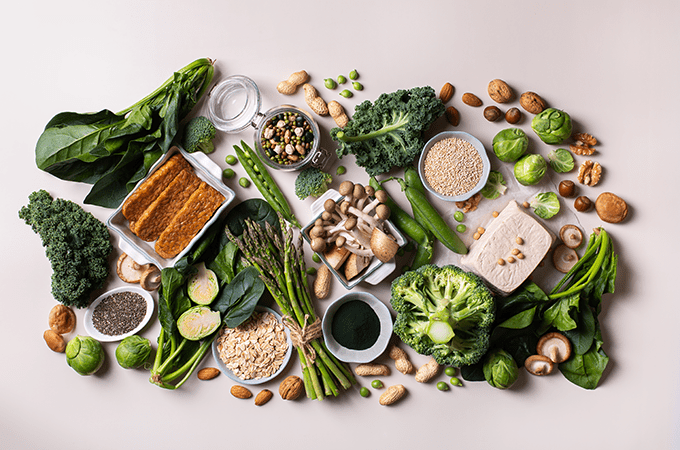
4. Vegetarian Diet
A diet consisting wholly of vegetables, fruits, grains, beans, nuts, and sometimes eggs or dairy products.

5. Pescatarian Diet
Vegetarians who include fish and other seafood in their otherwise plant-based diet are called pescatarians. They may include other animal products like eggs, cheese, and milk, but this is optional.
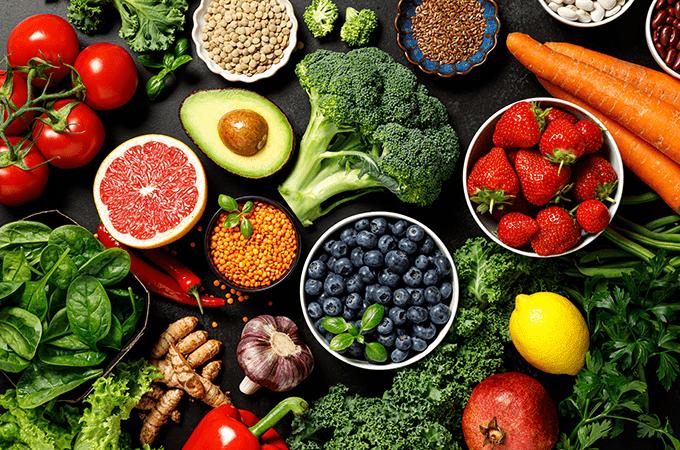
6. Plant-Based Diet
A plant-based diet is not far from a vegetarian diet, but it does allow for animal products in small amounts, if desired. It’s a great plan for someone who wants to eat more produce, without having to give up meat. The focus is placed on fruits, vegetables, greens, and other plant-based foods, while animal products are treated more like condiments.
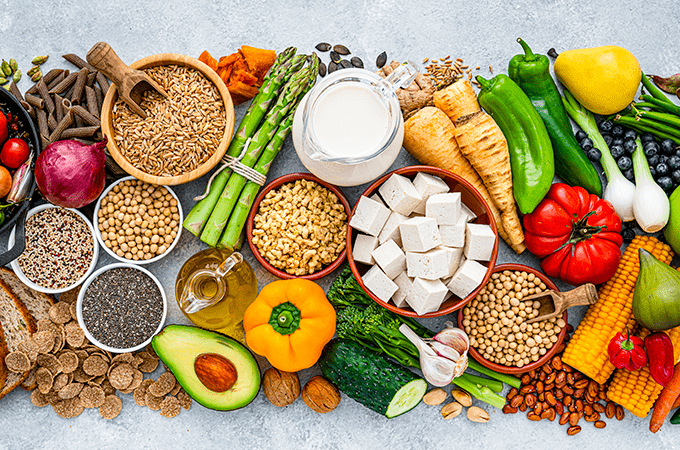
7. Vegan Diet
A vegan diet is one that eliminates all animal products, including meat, fish, dairy, honey, and eggs. Though it sounds limiting to those looking at it from the outside, people following a vegan diet don’t think of it as being restrictive because of the wide variety of fresh, whole foods they get to eat all day long. Think Heinen’s Produce Department and other animal-free alternatives for dairy and meat found throughout the store.
Contrary to popular belief, a well-planned vegan diet offers plenty of protein, but one nutrient of concern that vegan eaters need to be mindful of is vitamin B-12. This can be resolved by taking a daily whole food-based B-12 supplement.
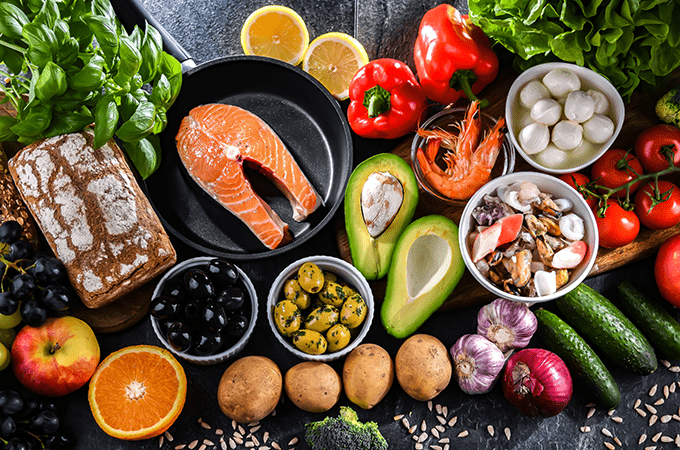
8. Mediterranean Diet
As its name suggests, the Mediterranean diet reflects the traditional food patterns of those countries surrounding the Mediterranean Sea, including France, Spain, Greece, and Italy. It promotes whole, unprocessed foods with simple preparation. Fruits, vegetables, whole grains, and legumes are staple foods to be enjoyed, along with small amounts of healthy fat with meals like extra virgin olive oil, olives, nuts and seeds, and avocados. Fish is the preferred animal protein and very little red meat is eaten.
Sounds a lot like an Fx™-style meal plan, doesn’t it?
Key Takeaway
The seven Fx™ Pillars are a great starting point to help you thrive in good health for years to come. Two of the pillars, however, stand out above the rest and can be easily incorporated into a variety of diets: Pillar 1: Eat your greens, as many as you can every day and Pillar 2: Eat a rainbow of fruits and vegetables every day.
In evaluating any eating style, just remember this one simple truth: Beyond mere survival, food should add years to your life and life to your years.



Thanks for taking the time to explain each of the trending diets. I’m happy with the pescatarian diet. It seems to work for me. Thank you for leading me to a good way of eating.